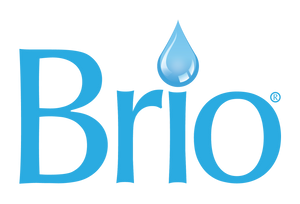If you live in an area with hot summers or travel to warm-weather destinations, you know the drill: loose, lightweight clothing, a broad-brimmed hat, and sunscreen. But when temperatures soar into the upper 80s, 90s, and higher, staying hydrated is critical to maintaining comfort and preventing heat-related illnesses.
You’ve probably heard of heatstroke, heat cramps, and heat exhaustion. But what are the differences and symptoms of each? Although these three illnesses sound similar, each affects the body differently.
Here’s what you need to know about heat-related illnesses and how to stay hydrated to prevent them.
What are heat-related illnesses?

When you’re outside in heat and humidity for long periods without adequate fluid intake or not taking breaks to cool down, your body struggles to maintain the steady conditions it needs. That’s when heat-related illnesses develop.
Heat cramps are relatively mild though painful and can serve as a warning, while heat exhaustion is more severe and requires immediate attention. Heatstroke is the most dangerous heat-related illness and can be fatal.
Understanding Heat Cramps
Sweating caused by physical activity in high temperatures or prolonged exposure to excessive heat can result in painful spasms, typically in the muscles of the calves, arms, abdomen, and back. While sweating is necessary to cool the body, it also results in the loss of fluid and electrolytes. Electrolytes are essential minerals, like sodium, calcium, and potassium, that regulate muscle contractions and help control the nervous system.
If you’re experiencing heat cramps, stop doing what you’re doing immediately. You need to get out of the heat and cool down. Sip cool water, coconut water, or a sports drink to replenish lost fluid and electrolytes. When you’ve sufficiently cooled down, try gently stretching and massaging the spasming muscles. If the cramps don’t go away within an hour or so, contact your doctor.
Understanding Heat Exhaustion

Symptoms of heat exhaustion and heatstroke include:
- Nausea
- Dizziness
- Weakness
- Warm and dry skin
- Rapid heart rate
- Fever of 104°F or higher
- Headache
If you’re experiencing any of the above, you may have heat exhaustion. You must move (or be moved) to a cool place immediately and sip cool water or sports drinks. Loosen your clothing, and either mist yourself with cool water or place cool, wet towels on your body. Taking a cool bath can also quickly lower your body temperature.
If you vomit or if your symptoms don’t improve within an hour or get worse, seek medical attention immediately.
Understanding Heatstroke
Along with the symptoms of heat exhaustion, heatstroke also includes confusion, seizures, loss of consciousness, or all three. The body’s internal temperature is so high it can no longer cool itself.
Heatstroke is a life-threatening medical emergency, and the victim must be treated by a physician. If you suspect someone is experiencing a heatstroke, immediately call for an ambulance. Left untreated, heatstroke can be lethal. It can also permanently damage the brain and internal organs of those who survive if they’re not treated quickly enough.
While waiting for help to arrive, cool the victim as much as possible. Some things you can do include:
- Remove excess clothing.
- Soak their skin with cool water.
- Use a fan, if available.
- Place ice packs around the neck, under the armpits, and in the groin area.
- Place the person in a cool bath if they are conscious and can be continuously monitored for seizures or loss of consciousness.
- Allow them to sip water if they are conscious enough to do so safely.
On average, there are 702 heat-related deaths annually in the United States, so protecting yourself during the hottest time of the year is vital.
How to Prevent Heat-related Illnesses
The good news is that heatstroke is almost always preventable. It’s just a matter of taking the proper precautions and staying as hydrated as possible. It’s important to select the right beverages to stay hydrated, such as water, instead of sugary or alcoholic drinks that can alter your body’s electrolyte levels.
If possible, avoid outdoor heat when the sun is strongest, between 10 a.m. and 4 p.m. If you don’t have air-conditioning at home, try a movie theater, public library, or local cooling center. Wear lightweight and light-colored clothing.
How to Stay Hydrated in the Heat

Drinking fluids regularly and often is the best way to stay hydrated in the heat. Aim to drink 8 ounces of water every 15 to 20 minutes and avoid beverages with caffeine, which can dehydrate you.
The Brio Moderna 3-Stage Countertop Water Cooler comes in a durable, modern stainless steel design and offers three premium-filtration stages that significantly reduce harmful contaminants in your drinking water while preserving important electrolytes like calcium and magnesium.
With the Moderna, you can also preset the dispensing temperatures for hot and cold water to enjoy the water temperature you prefer. Bringing a refillable bottle of cool, purified water when the weather is hot can help you stay hydrated and prevent heat-related illnesses.




